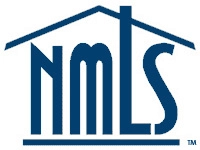4 big reasons a HELOC makes sense right now.
A Home Equity Line of Credit (HELOC) is a financial product that allows homeowners to borrow money against the equity they’ve built up in their property. Equity is the difference between the current market value of the property and the outstanding balance on any mortgage or loans secured by the property. HELOCs are typically offered by banks, credit unions, and other lending institutions.
Here’s how a HELOC generally works:
- Equity as Collateral: The homeowner uses the equity in their home as collateral for the HELOC. The lender establishes a credit limit, which is a maximum amount the homeowner can borrow.
- Draw Period: Once approved, the homeowner can draw funds from the HELOC during a specified draw period, which is usually around 5 to 10 years. This period is often followed by a repayment period.
- Flexible Borrowing: During the draw period, the homeowner can borrow any amount up to the established HELOC, similar to how one would use a credit card. Interest is only charged on the amount borrowed.
- Variable Interest Rates: HELOCs typically have variable interest rates, which means the rate can fluctuate over time based on changes in a benchmark interest rate. This can lead to changes in monthly payments and the total cost of the loan.
- Repayment: After the draw period ends, the homeowner enters the repayment period, which can last around 10 to 20 years. During this time, the homeowner can no longer borrow from HELOC and must start repaying both the principal amount borrowed and the interest.
- Interest Payments: Monthly payments during the draw period often cover only the interest due on the amount borrowed, which means the principal balance remains unchanged. During the repayment period, monthly payments usually include both principal and interest.
- Access to Funds: Homeowners can use the funds borrowed through a HELOC for various purposes, such as home renovations, education expenses, debt consolidation, or other financial needs.
It’s important to note that a HELOC uses your home as collateral, so failing to make payments as agreed upon can result in the lender taking steps to foreclose on the property. Additionally, since HELOCs have variable interest rates, your monthly payments can change over time, which could affect your budgeting.
Before considering a HELOC, it’s recommended to carefully review the terms, interest rates, fees, and potential risks associated with the product. Consulting a financial advisor can help you make an informed decision based on your financial situation and goals.
With a HELOC, you dont have to refinance your existing mortgage. Instead, you get access to a line of credit that is tied to your remaining equity. It’s like a credit card, allowing you to borrow what you need — as needed — and then pay back only what you borrowed with interest.
Home buyers, today, are feeling stuck by how expensive it is to buy a home. But for those who already own a home, their ability to tap their home’s rising equity has become an option.
4 Reasons to get a HELOC…
Mortgage rates are near 7% currently
For-sale home inventory is still low
Home equity levels are still high
You could get unique tax advantages
The bottom line
The current Real Estate Climate offers homeowners a range of opportunities to use their property’s equity. A HELOC, with its lower interest rates, borrowing flexibility, potential tax advantages and ability to fund home projects or pay off debt, may work with your financial situation. You can use a HELOC for renovation, to consolidate higher-interest debts or to prepare for future financial needs.














